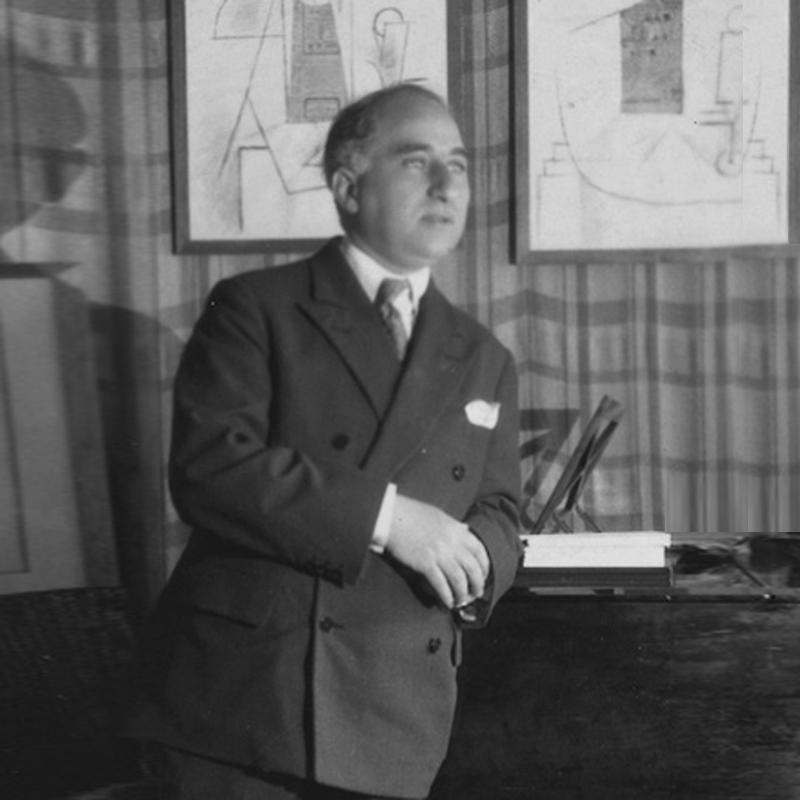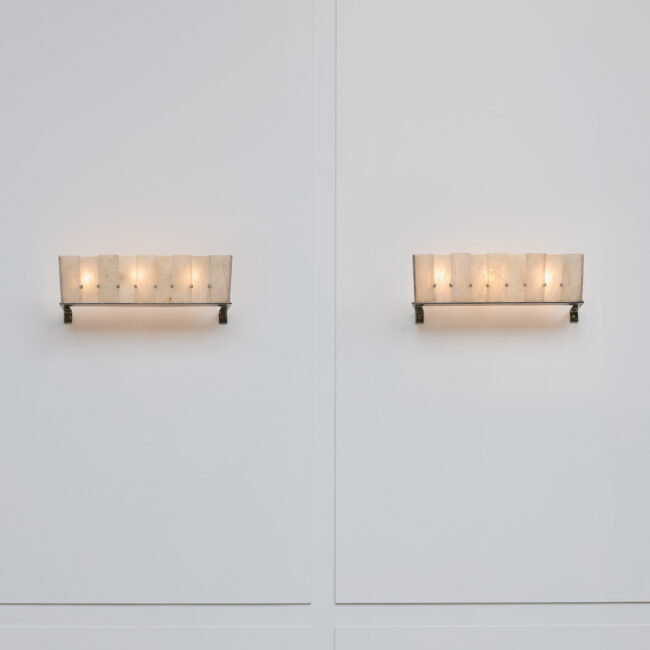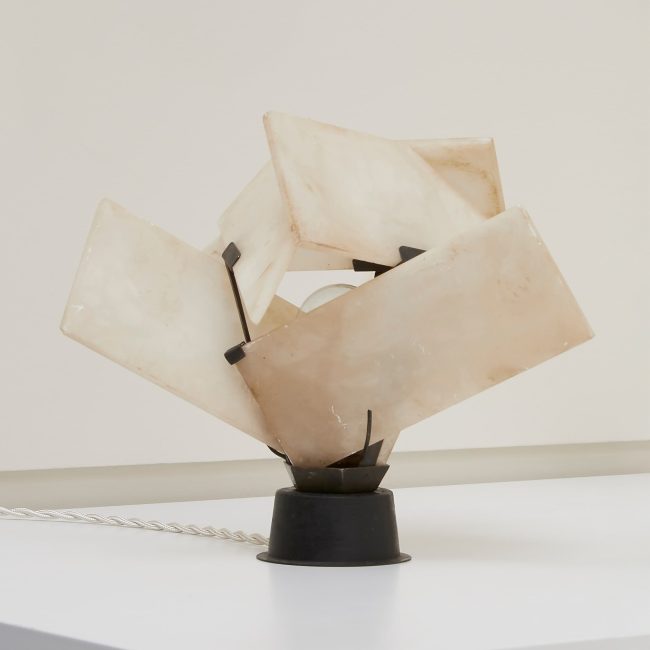PIERRE CHAREAU (1883-1950)
Pierre Chareau was born in Bordeauxin 1883. He studied in the Ecole Nationale Supérieure des Beaux-Arts, then began his career in the English firm Waring and Gillow which was specialized in the production of Arts and Crafts furniture. In 1919, he opened his own workshop located 54 rue Nollet in Paris. This place was already a true milestone. A clever system of picture rails offered the possibility to hang some frames, some shelves, a light system or a desk.
This evolution of his style is particularly interesting.
His first pieces, a pair of armchairs, were designed in the Restoration style ; and then there was a kind of English influence. The Viennese inspiration, from Josef Hoffman to Aldolf Loos, was also very important.
A pioneer of the modern movement, Pierre Chareau rubbed shoulders with the avant-gardes and became friends with Paul Poiret, Max Jacob, Marcel l’Herbier, Hélène Henry, Mallet-Stevens.
Throughout his career, Pierre Chareau designed some furniture pieces and interior spaces in a homogenous and balanced spirit. His style is not ephemeral. He designed some unique pieces mixing precious wood and tubular steel or metal. His « engineer-builder » mindset encouraged him to adopt a very rational approach. He took part in the UAM since 1930.

View Full Biography
Pierre Chareau was born in 1883 in Bordeaux. The studied at the Ecole Nationale Supérieure des Beaux-Arts and began his career in the English firm Waring and Gillow which is specialized in the production of Arts and Crafts furnitures. In 1919, he opened his own workshop located 54 rue Nollet, Paris. This place was already a true milestone. A clever system of picture rails offered the possibility to hung some frames, some shelves, a light system or a desk !
This evolution of his style is particularly interesting.
His first pieces, as a pair of armchairs, were designed in the Restauration style ; and then there was a kind of English influence. The Viennese inspiration, from Josef Hoffman to Aldolf Loos, was very important.
Pioneer of the modern movement, Pierre Chareau rubbed shoulders with the avant-gardes and became friend with Paul Poiret, Max Jacob, Marcel l’Herbier, Hélène Henry, Mallet-Stevens.
Throughout his career, Pierre Chareau designed some furniture pieces and interior spaces in a homogenous and balanced spirit. His style is not ephemeral. He designed some unique pieces mixing precious wood and tubular steel or metal. His « engineer-builder » mindset pushed him into a very rational reflexion. He took part in the UAM since 1930.
Pierre Chareau was very well-know for La Maison de Verre, designed between 1928 and 1931 for the Dr. Dalsace.
His architectonic conception of the furniture had no limit. The metal offered him an important range of possibilities. He collaborates since 1923 with the workshop Dalbet which produced high quality pieces. Plant-stands, fire-screes, small pieces from the beginning became more complex conception as lightning fixtures mixing alabaster and precious species. From the line to the volume, Pierre Chareau set an easily identifiable stylistic vocabulary. His lights became true cubist pieces.
The metal was one of his preferred material. Unpolished, rough, waxed, all these steps were only allowed by craftsmanship.
Marc Velley, the author of the artist’s monograph said : « Down to his use of metal, however an industrial material, he (Pierre Chareau) stays the man of the unique piece, working with the craftsmen and not the factory. » (in Pierre Chareau Architecture-meublier 1993-1950, p. 147).
Exiled in the United-States since 1940, Pierre Chareau designed his last project in 1947 for the Robert Motherwell’s house. He died in 1950. Throughout his life he had created sculptural pieces in line with his coherent interior designs, thought as a whole. His style can not be separate from his great savoir-faire : inventor of the metallic carpentry, forerunner of the use of indirect light… Pierre Chareau had shown a great modernity with always a great sense of poetry.




